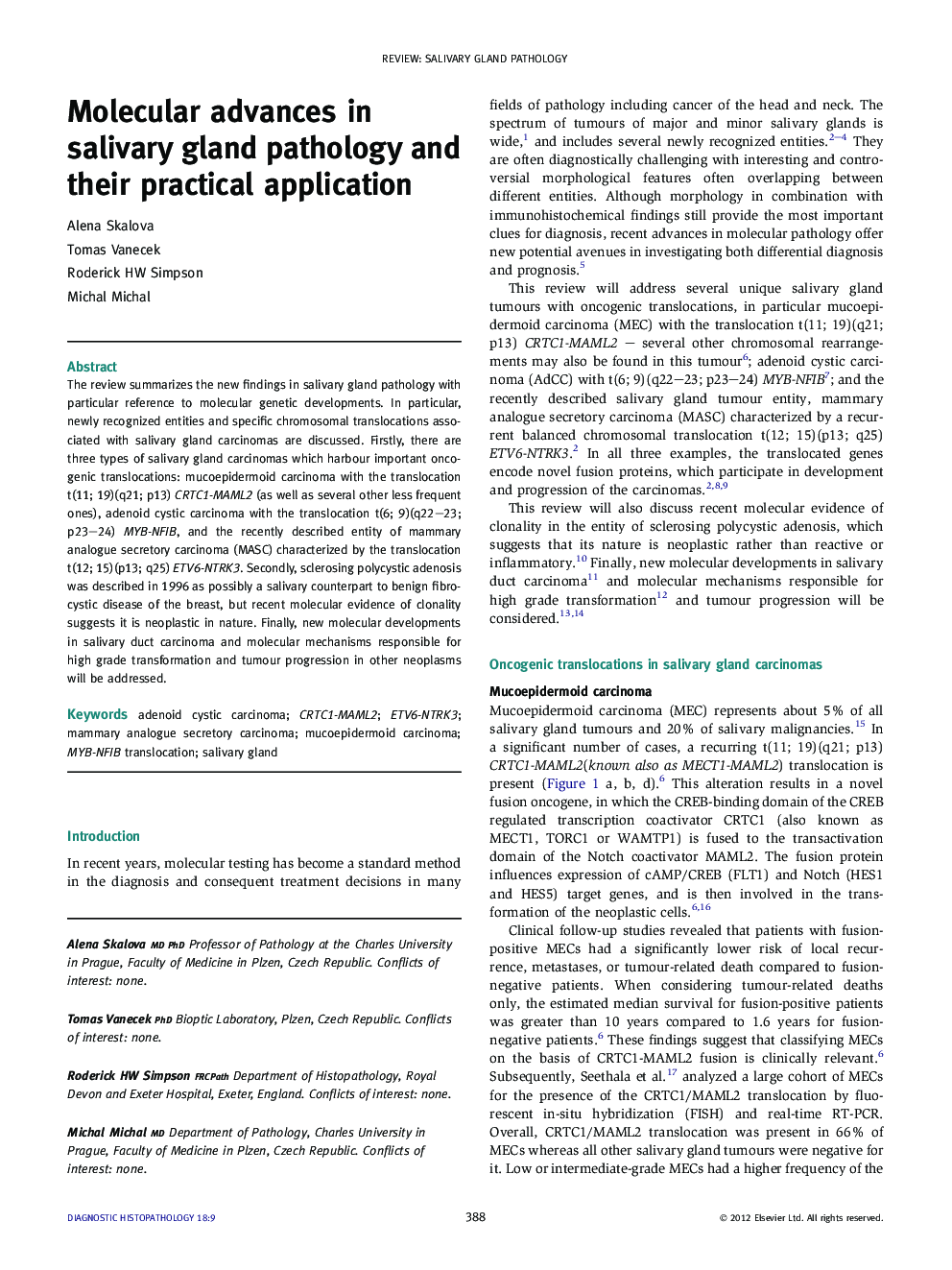| Article ID | Journal | Published Year | Pages | File Type |
|---|---|---|---|---|
| 4131294 | Diagnostic Histopathology | 2012 | 9 Pages |
The review summarizes the new findings in salivary gland pathology with particular reference to molecular genetic developments. In particular, newly recognized entities and specific chromosomal translocations associated with salivary gland carcinomas are discussed. Firstly, there are three types of salivary gland carcinomas which harbour important oncogenic translocations: mucoepidermoid carcinoma with the translocation t(11; 19)(q21; p13) CRTC1-MAML2 (as well as several other less frequent ones), adenoid cystic carcinoma with the translocation t(6; 9)(q22–23; p23–24) MYB-NFIB, and the recently described entity of mammary analogue secretory carcinoma (MASC) characterized by the translocation t(12; 15)(p13; q25) ETV6-NTRK3. Secondly, sclerosing polycystic adenosis was described in 1996 as possibly a salivary counterpart to benign fibrocystic disease of the breast, but recent molecular evidence of clonality suggests it is neoplastic in nature. Finally, new molecular developments in salivary duct carcinoma and molecular mechanisms responsible for high grade transformation and tumour progression in other neoplasms will be addressed.
